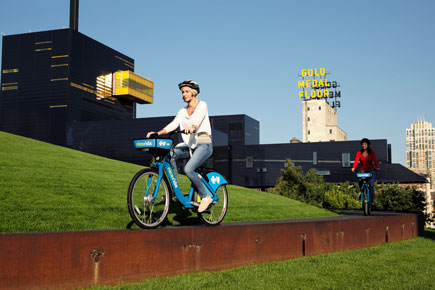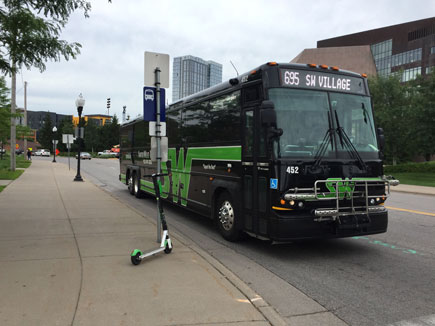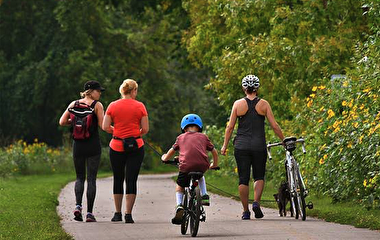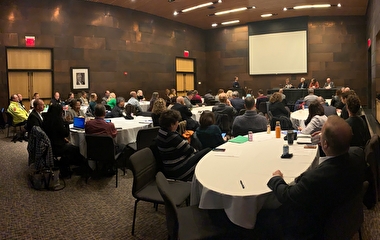From the quick rise of the electric scooter to Lyft’s expansion of bike-share networks across the country, change is constant in the shared mobility industry. This changing landscape was the topic of the CTS Spring Luncheon presentation by Caroline Samponaro, a longtime bike and pedestrian advocate in New York City who now leads micromobility policy at Lyft.
Samponaro spoke first about her own professional journey, which included 12 years as deputy director of Transportation Alternatives, a New York City nonprofit. She played a role in significant transportation shifts including a car-free Times Square, a successful bike-share program, and several major protected bikeway projects.
After a decade in nonprofit advocacy, Samponaro was initially surprised when Lyft founder John Zimmer reached out with a job offer. “However, I was immediately struck by how mission-driven he is,” she said. “He was talking about green cities, carrying bike share into a new setting, and scaling bike share in a way that hadn’t been possible before.”
Lyft is now the largest bike-share operator in the US and owns the company that operates Minnesota’s Nice Ride bike-sharing program.
As head of bike, scooter, and pedestrian policy at Lyft, Samponaro leads efforts to form strong partnerships with cities on policy initiatives such as Vision Zero (a multinational movement for road safety) and complete street redesigns. She’s also working to help realize specific goals around bike and scooter shared mobility.
These goals include Lyft’s three “micromobility pillars”: transportation equity, streets for people, and transit integration. For example, Nice Ride for All, a member program launched in May, addresses equity concerns by giving low-cost access to Minneapolis residents who use food- or transit-assistance programs. Lyft lobbies for road safety—"not just for the passenger and driver but for everyone on the road,” she said—and supports multimodalism and reducing vehicle-miles traveled.
Lyft is part of the solution for delivering public sector goals, she continued, stressing that “transit integration is fundamental.” Its new app provides real-time transit information and allows users to piece together trips with bike and car sharing. “We want to teach people how to be multimodal…and reach people we never reached before,” she said.
During her time at Lyft, Samponaro has observed trends in micromobility, including a “dockless bubble that has…popped in some areas,” an increase in station-based bike-share trips, and the growth of scooter trips. “With scooters we are tapping into latent demand to get out of the car and do something different,” she said. “People are getting a taste of something new with scooters, and we see it as a way to get them onto bike share and transit.” Lyft, she concluded, is positioning itself to be “a platform for people who want our service.”
Bill Dossett, executive director of Nice Ride Minnesota, then moderated a question-and-answer session. In starting the discussion, he said that public-private relationships will be critical to moving shared mobility forward in Minneapolis and the region. “We have a huge challenge,” he said. “We have to build processes to communicate with organizations like Lyft that want to be the Amazon of transportation.”
Samponaro agreed that working together will be essential. “We need ways to come together, challenge each other, and embrace each other…and make the tent bigger by bringing more voices into the discussion.”





